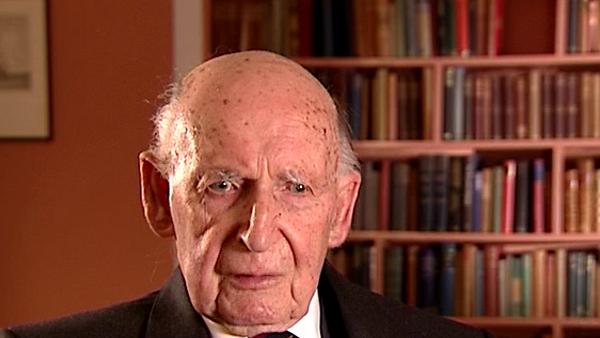NEXT STORY

Work for the Air Ministry
RELATED STORIES

NEXT STORY

Work for the Air Ministry
RELATED STORIES


|
Views | Duration | |
|---|---|---|---|
| 101. The first picture of the surface of the Moon | 153 | 03:13 | |
| 102. Working between the Soviets and Americans | 125 | 05:51 | |
| 103. America successfully lands on the Moon | 130 | 04:57 | |
| 104. A visit to the Telecommunications Research Establishment in... | 114 | 02:03 | |
| 105. Work for the Air Ministry | 77 | 03:28 | |
| 106. Jodrell Bank's involvement in the Cuban missile crisis | 145 | 07:41 | |
| 107. Important work enabled by use of the steerable telescope | 88 | 02:51 | |
| 108. A visit to Fylingdales and my retirement | 163 | 03:47 |

I mentioned in... earlier in this record of happenings, that shortly after the telescope began construction, I received that message from the Astromomer Royal Sir Spencer Jones, asking me to join the Air Navigational Committee and I have already related in this record that I did so and subsequently served as a chairman of that committee and then on the Air Warfare Committee, and then on the Aeronautical Research Council. This was a return to an activity, which I had thought I had left behind, but which I nevertheless found extreme interest... of extreme interest.
I was asked to go with a colleague from the Air Warfare Committee to visit the establishment, which I had left TRE in Malvern to see what they were... they were doing and to my amazement they had made absolutely no progress. They had... he... they had succeeded in modifying my last mark of H2S and making it suitable for the V-bombers, which were then in action. But the Fishpond for the rear gunner, which I mentioned, was still in action, and indeed, that system was continued to be used right onto the Falklands war. And, in fact, the modified system which I had left behind me in 1945 was used to bomb the runways and Falkland during that war so many years later, and then, of course, the new devices took over – of guided weapons and... and lasers.
Bernard Lovell (1913-2012), British radio astronomer and founder of the Jodrell Bank Observatory, received an OBE in 1946 for his work on radar, and was knighted in 1961 for his contribution to the development of radio astronomy. He obtained a PhD in 1936 at the University of Bristol. His steerable radio telescope, which tracked Sputnik across the sky, is now named the Lovell telescope.
Title: A visit to the Telecommunications Research Establishment in Malvern
Listeners: Megan Argo Alastair Gunn
Megan Argo is an astronomer at the University of Manchester's Jodrell Bank Observatory researching supernovae and star formation in nearby starburst galaxies. As well as research, she is involved with events in the Observatory's Visitor Centre explaining both astronomy and the history of the Observatory to the public.
Alastair Gunn is an astrophysicist at Jodrell Bank Observatory, University of Manchester. He is responsible for the coordination and execution of international radio astronomical observations at the institute and his professional research concerns the extended atmospheres of highly active binary stars. Alastair has a deep interest and knowledge of the history of radio astronomy in general and of Jodrell Bank in particular. He has written extensively about Jodrell Bank's history.
Tags: Telecommunications Research Establishment, Malvern, Air Navigational Committee, Astromomer Royal, Falklands War, H2S radar, Spencer Jones
Duration: 2 minutes, 3 seconds
Date story recorded: January 2007
Date story went live: 05 September 2008